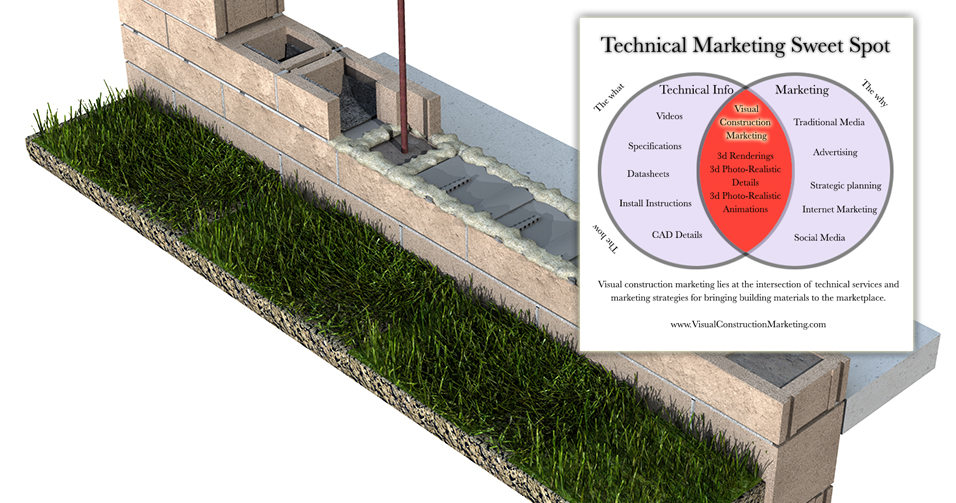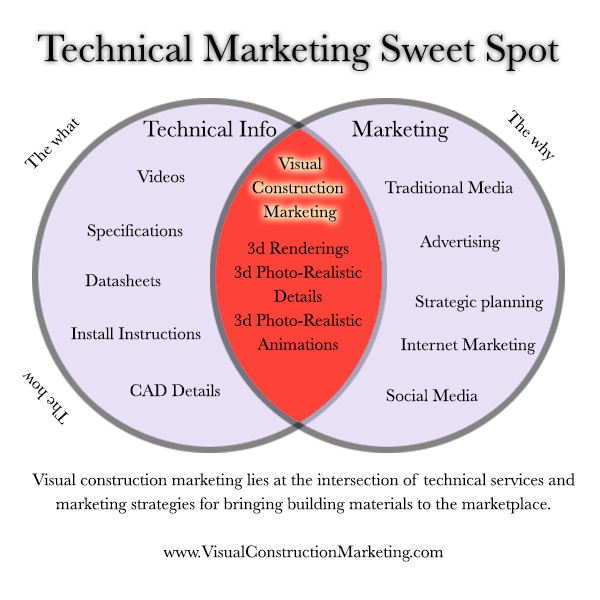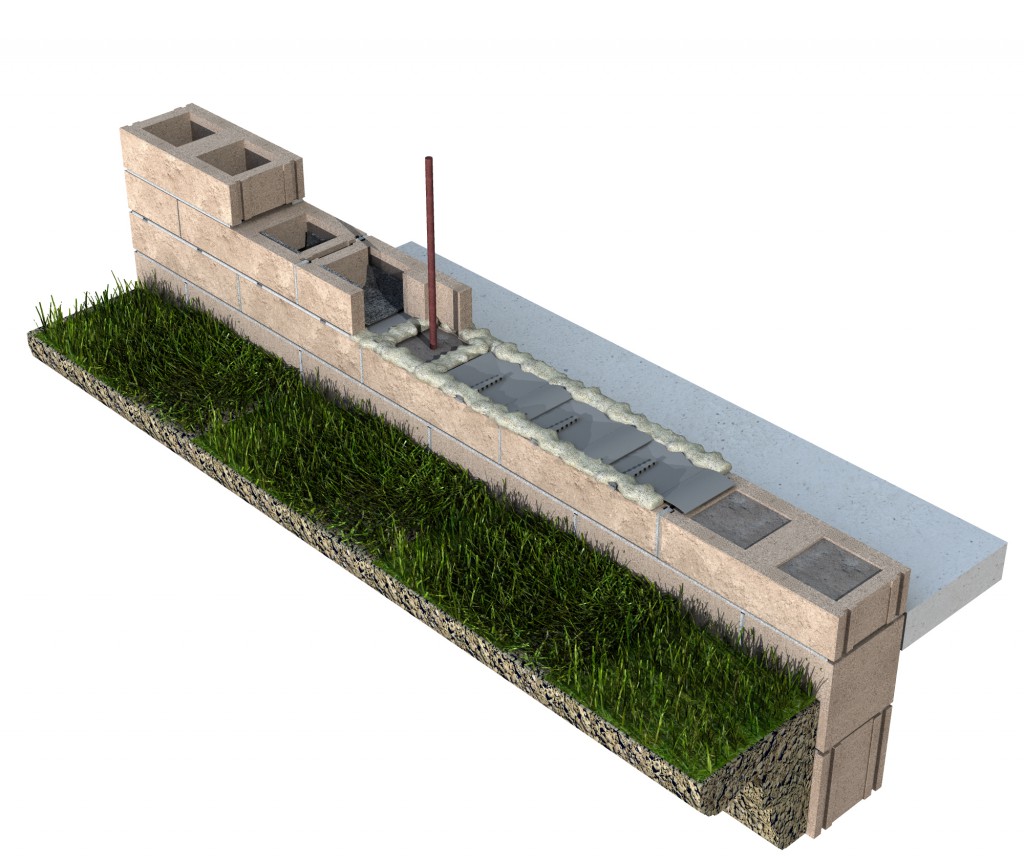When you break down the act of bringing a building product to the marketplace, you end up with a pretty simple equation.
The What = what the product is that you are selling
The How = how the product works, what it does, how it is used
The Why = why would someone choose this product?
Formula for bringing a building product to market = What + How + Why
The What & the How
These are the technical details regarding your product. What is it made of? What does it look like? What sizes, shapes and variations is it available in? This information takes shape in the form of suggested cad details, written guide specifications, datasheets, installation instructions and many other technical forms. These materials are created through many different means depending on the culture, size and organization of a company.
Large corporations generally have a whole technical staff working on these things in conjunction with engineers and product designers, all in-house. Smaller companies sometimes have one person who is an expert on all the technical aspects of the products and tends to be a one person army tackling technical drawings,cad and technical writing duties. Others outsource the creation of these technical services to a company like mine to do some or all of their technical materials. While I enjoy doing these cad and bim drawings and basic technical illustrations and brochures, what gets me excited is combining these utilitarian materials with creative spark and marketing flair.
In my experience, working for companies of all shapes, sizes and cultures, is that they all suffer from a division between the technical aspects of their products ( the what and how) and the marketing aspects of their offerings ( the why). The technical materials, drawings and supporting information is always dry, boring and creatively uninspired.
The Why
Marketing, the way I see it, is taking a step back from the nuts and bolts of your products and taking a larger picture view of how take this carefully engineered and designed widget from the warehouse to the marketplace. It is a 20,000 foot view of your business, using old media, new media, advertising, glossy brochures and strategic planning to accomplish your business goals.
Marketing, like technical services, is done very differently from company to company. I have worked for companies who don’t have a marketing person at all. Some have an entire marketing staff and others hire out to marketing firms that specialize in construction marketing.
In all cases the challenges needs and strategies are largely the same. These are the need for a clear marketing message and a long term marketing plan along with the need to provide technical information about how this product is actually used.
In all cases a magical thing happens when these 2 disciplines are combined into 1 clear strategy if you draw 2 circles one representing marketing and the other technical services you arrive at the sweet spot of building product marketing. This is the place that I call “technical marketing”
Here is a recipe to arrive at the technical marketing sweet spot:
1. Make your marketing materials more technical
2 Make your technical materials more markety (definitely not a word)
3. Take 1 and 2 and stir
4. Take the results and run it through a sifter until you have removed all unnecessary elements that do not support your message or give too much un-needed information.
What you will end up with is simple effective Technical Marketing that will speak to architect and contractors with resonance
An example of this in action :
Example – BlokFlash by Mortar Net
This usually successful product is use for concrete block walls to allow water to escape safely. It solves a clear problem in the marketplace. This 1 drawing below communicates the technical aspects of how the product is used in a technically accurate and visually appealing way that communicates the what, how and the why all at onc. It does this in a way that speaks to architects as well as contractors and tradesmen alike and is equally suited to use in advertisements, brochures and suggested details.
Example in the form of an animation showing the how, what and why of a product :
Have you had frustration in bridging this gap between marketing and technical services? Let me know what you think . .
-JY








